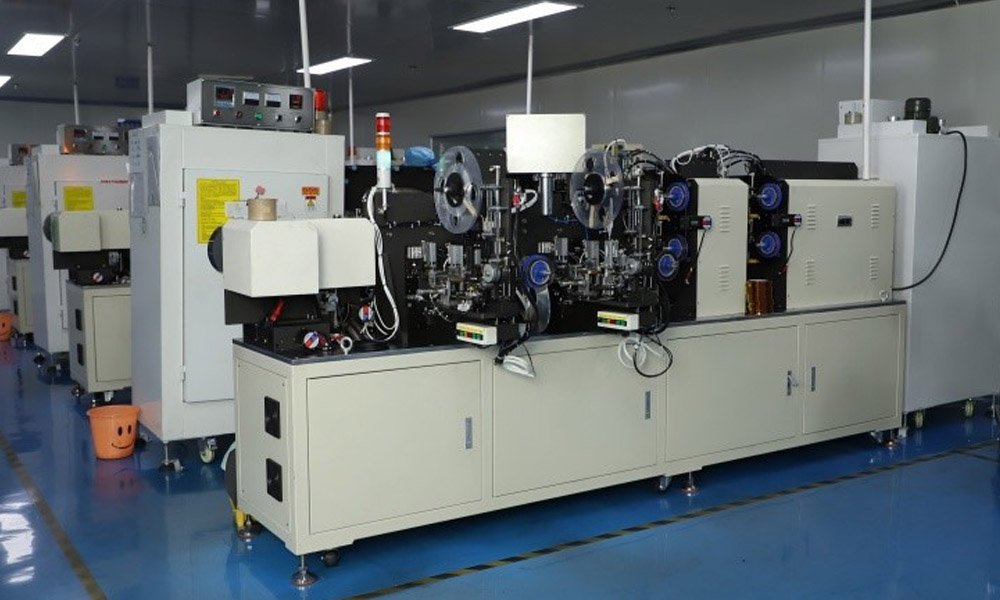The rapid expansion of electric vehicles and energy storage systems has driven unprecedented growth in lithium battery manufacturing worldwide. However, this industry presents unique safety challenges due to the volatile nature of materials involved and the complex chemical processes required. Understanding and implementing comprehensive safety protocols is not merely regulatory compliance—it’s fundamental to protecting workers, facilities, and surrounding communities from potentially catastrophic incidents.
Critical Hazards in Battery Production Environments
Lithium-ion battery production involves handling highly reactive materials that pose multiple hazards. Lithium metal reacts violently with water, producing hydrogen gas and heat that can trigger explosions. The electrolytes used contain flammable organic solvents like ethylene carbonate and dimethyl carbonate, which release toxic vapors. Additionally, the manufacturing process generates metal particulates and chemical fumes that present serious respiratory hazards. Thermal runaway represents perhaps the most dangerous risk, where a single cell failure can cascade through entire battery assemblies, reaching temperatures exceeding 1000°C within seconds.
Fire Prevention and Suppression Systems
Traditional water-based fire suppression systems prove inadequate and potentially dangerous in lithium battery manufacturing facilities. Specialized Class D fire extinguishers containing dry powder agents like copper powder or graphite must be strategically positioned throughout production areas. Advanced fire detection systems utilizing multi-spectrum infrared sensors can identify thermal anomalies before visible flames appear. Facilities must install compartmentalized fire barriers between production zones, preventing fire spread while maintaining separate suppression zones. Automatic gas suppression systems using clean agents like Novec 1230 or FM-200 provide rapid response without damaging sensitive equipment or leaving residue.
Atmospheric Control and Ventilation Requirements
Maintaining controlled atmospheric conditions is essential for both product quality and worker safety in lithium battery manufacturing environments. Production areas require maintaining relative humidity below 1% to prevent moisture-related reactions with lithium compounds. High-efficiency particulate air (HEPA) filtration systems must achieve minimum efficiency reporting value (MERV) ratings of 16 or higher to capture ultrafine metal particles. Continuous air monitoring systems should detect volatile organic compounds (VOCs), hydrogen fluoride, and phosphine gases at parts-per-billion concentrations. Emergency ventilation systems capable of achieving 20 air changes per hour must activate automatically when hazardous gas concentrations exceed predetermined thresholds.
Personal Protective Equipment Standards
Workers in lithium battery manufacturing facilities require specialized PPE beyond standard industrial equipment. Chemical-resistant gloves made from butyl rubber or laminated materials provide necessary protection against electrolyte exposure. Full-face respirators with combination cartridges rated for organic vapors and particulates are mandatory in mixing and coating areas. Flame-resistant clothing meeting NFPA 2112 standards protects against flash fire hazards. Anti-static footwear and grounding straps prevent electrostatic discharge that could ignite flammable vapors. Emergency equipment including self-contained breathing apparatus (SCBA) and chemical splash suits must be readily accessible throughout the facility.
Chemical Storage and Handling Protocols
Proper chemical management prevents dangerous reactions and contamination in lithium battery manufacturing processes. Lithium hexafluorophosphate and other electrolyte salts require storage in moisture-proof containers within temperature-controlled environments between 15-25°C. Organic solvents must be stored in grounded, explosion-proof cabinets with automatic closing mechanisms. Incompatible materials like oxidizers and reducing agents require physical separation with minimum distances determined by quantity and reactivity classifications. Secondary containment systems capable of holding 110% of the largest container volume prevent environmental releases during spills or leaks.
Emergency Response and Evacuation Procedures
Comprehensive emergency preparedness can mean the difference between a minor incident and a catastrophic event. Facilities must establish clear evacuation routes with photoluminescent marking visible in smoke-filled conditions. Emergency response teams require specialized training in lithium battery fire suppression techniques and chemical spill containment. Regular drills simulating various scenarios including thermal runaway events, chemical releases, and equipment failures ensure rapid, coordinated responses. Automated emergency shutdown systems must isolate hazardous processes within 30 seconds of activation while maintaining critical safety systems like ventilation and fire suppression.
Training and Certification Requirements
Effective safety in lithium battery manufacturing depends on comprehensive workforce education. New employees must complete minimum 40-hour hazard communication training covering chemical properties, exposure risks, and emergency procedures. Specialized roles like electrolyte mixing technicians require additional certification in chemical handling and spill response. Annual refresher training ensures workers remain current with evolving safety protocols and regulatory requirements. Competency assessments through written examinations and practical demonstrations verify understanding before workers handle hazardous materials independently.
Regulatory Compliance and Documentation
Manufacturing facilities must navigate complex regulatory frameworks governing occupational safety, environmental protection, and hazardous materials management. OSHA’s Process Safety Management standard requires detailed analysis of potential hazards and implementation of preventive measures. EPA regulations mandate reporting thresholds for toxic chemical releases and waste management procedures. Comprehensive documentation including safety data sheets, training records, incident reports, and inspection logs must be maintained for regulatory audits. Regular third-party assessments ensure compliance with international standards like ISO 45001 for occupational health and safety management systems.
The inherent risks in lithium battery manufacturing demand rigorous attention to safety protocols at every operational level. From sophisticated fire suppression systems to comprehensive worker training programs, each element contributes to a culture of safety that protects human life, preserves valuable assets, and ensures sustainable production. As battery technology continues evolving toward higher energy densities and novel chemistries, safety protocols must similarly advance to address emerging hazards. Investment in robust safety infrastructure and continuous improvement of protective measures isn’t just regulatory necessity—it’s fundamental to the industry’s long-term viability and social license to operate. Only through unwavering commitment to safety excellence can manufacturers meet growing demand while maintaining acceptable risk levels in this critical industry.


